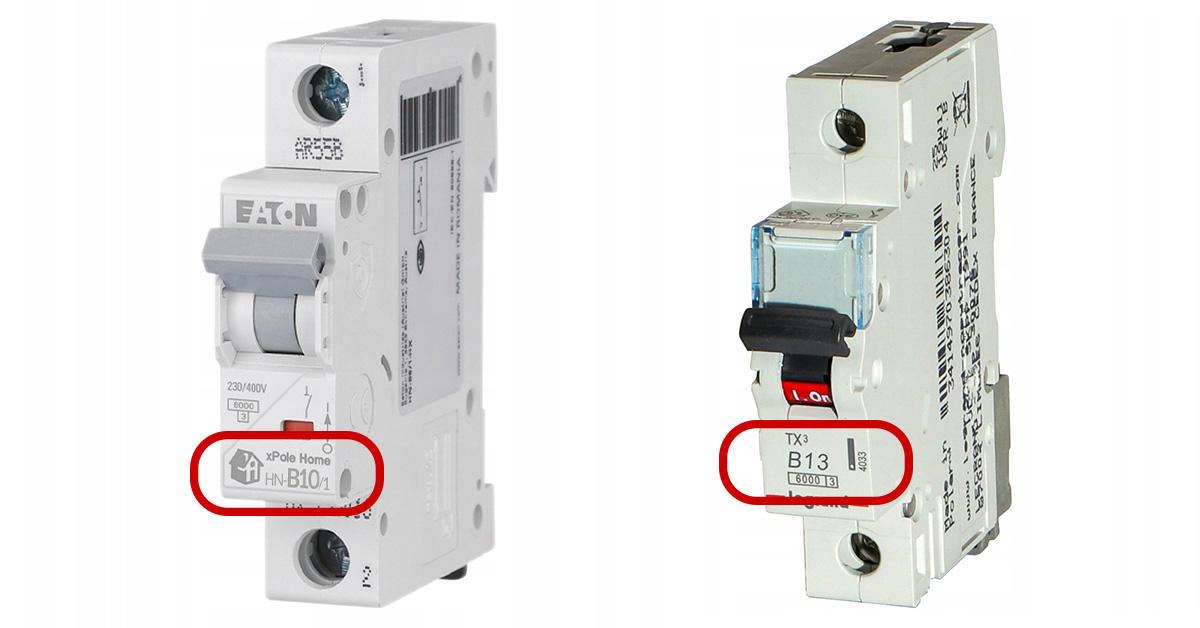What kind of fuse for a heating mat?

Current flows in electrical installations, which can pose a danger to humans. For this reason, appropriate safeguards are used to minimize such risks. Most often these are overcurrent fuses and residual current circuit breakers. To perform their function, their parameters must be selected for the heating system.
Overcurrent fuse for a heating mat
Current is characterized by two main parameters: voltage and amperage. The first of these is well known. We know that electricity has a voltage of 230 volts at the outlet and is therefore dangerous to humans, while batteries have only 1.5 volts and pose no danger. However, this is not entirely true. After all, the current intensity is an equally important parameter. It tells how much charge flows through the cables. High current can cause the cables to melt and ignite, resulting in a fire. Therefore, it is necessary to protect the installation from too much current.
Overcurrent circuit breakers are commonly called fuses. They should be found in every home electrical installation. This is because they provide basic protection against overloading of wires and appliances.
How does an overcurrent circuit breaker work?
When too much current flows through the fuse, the circuit is disconnected. In old models, the fuse link was responsible for this, which melted and needed to be replaced. In circuit breakers, on the other hand, a heating bimetal is responsible for this. When it reaches a given temperature, it bends and breaks the circuit. In order for current to flow into the device again, the fuse must be switched to the "on" position.
What kind of overcurrent fuse for a heating mat?

You can find various overcurrent circuit breakers on the market. Single-phase ones have only one lever, while three-phase ones have three levers connected to each other. For heating mats, single-phase circuit breakers are used. On each circuit breaker you can also find the corresponding marking. For RAYCHEM heating mats for electric floor heating, the most common is B 13 A. However, it is worth knowing what this notation means.
- The first letter indicates the speed of the overcurrent switch. If it is marked with the letter B, the time is 0.2 seconds. This is the amount of time needed for the bimetal to heat up and break the connection. Class C fuses have a longer tripping time and are used with electric motors, which often draw a much higher current during startup.
- The next place in the designation of a circuit breaker is the rated current. In our example, it is a maximum of 13. This is the average current given in amperes that can flow in the installation without tripping the fuse. This one will turn off only when the current is 2.5 - 3 times higher. Thus, in the case of underfloor heating, it will be 25A.
- Sometimes the letter A appears at the end, in other cases it may not be there. However, in this case it is not any coded information, but only a unit of current.
Choosing a circuit breaker with a rating that is too small will cause it to shut down frequently for no reason. On the other hand, a circuit breaker that is too large will simply not work if the heating mat fails. For a single T2QuickNet heating mat, the manufacturer recommends using a circuit breaker no larger than B 13 A.
Protection selection table for RAYCHEM QuickNet-160 heating mat.
| QuickNet-160 | Surface | Total power | Dimensions | Overcurrent circuit breaker | Residual current circuit breaker |
|---|---|---|---|---|---|
| R-QN-P-1,0M2 | 1,0 m² | 160 W | 0,5 x 2,0 | B 10 A | 30 mA |
| R-QN-P-1,5M2 | 1,5 m² | 240 W | 0,5 x 3,0 | B 10 A | 30 mA |
| R-QN-P-2,0M2 | 2,0 m² | 320 W | 0,5 x 4,0 | B 10 A | 30 mA |
| R-QN-P-2,5M2 | 2,5 m² | 400 W | 0,5 x 5,0 | B 10 A | 30 mA |
| R-QN-P-3,0M2 | 3,0 m² | 480 W | 0,5 x 6,0 | B 10 A | 30 mA |
| R-QN-P-3,5M2 | 3,5 m² | 560 W | 0,5 x 7,0 | B 10 A | 30 mA |
| R-QN-P-4,0M2 | 4,0 m² | 640 W | 0,5 x 8,0 | B 10 A | 30 mA |
| R-QN-P-4,5M2 | 4,5 m² | 720 W | 0,5 x 9,0 | B 10 A | 30 mA |
| R-QN-P-5,0M2 | 5,0 m² | 800 W | 0,5 x 10,0 | B 10 A | 30 mA |
| R-QN-P-6,0M2 | 6,0 m² | 960 W | 0,5 x 12,0 | B 10 A | 30 mA |
| R-QN-P-7,0M2 | 7,0 m² | 1120 W | 0,5 x 14,0 | B 10 A | 30 mA |
| R-QN-P-8,0M2 | 8,0 m² | 1280 W | 0,5 x 16,0 | B 10 A | 30 mA |
| R-QN-P-9,0M2 | 9,0 m² | 1440 W | 0,5 x 18,0 | B 10 A | 30 mA |
| R-QN-P-10,0M2 | 10,0 m² | 1600 W | 0,5 x 20,0 | B 10 A | 30 mA |
Residual current circuit breaker for heating mats

Only when the two wires are connected: phase and neutral, current can flow through the electrical system. Sometimes, however, a puncture occurs. When this happens, some conductive element comes into contact with the metal part of the device housing. This is very dangerous, because such an enclosure is constantly live.
How does a residual current circuit breaker work?
Grounding is extremely important in terms of the operation of residual current circuit breakers. In this device, two wires are routed - phase and zero. They are located in an electromagnetic loop. As long as the current flowing through both conductors is the same, nothing happens.
However, if part of the current escapes through the ground, an imbalance occurs in the differential current fuse. A pulse is created in the electromagnetic loop, which disconnects the installation from the power supply.
What type of residual current circuit breaker to use in heating mats?
In practice, three types of residual current circuit breakers are used:
- high-sensitive, responding at a current difference of up to 30 mA,
- medium-sensitive, operating at a current lapse of 30 to 500 mA,
- low-sensitive, with a current difference of more than 500 mA.
If the heating system is not grounded, the residual current circuit breaker will trip only when the householder is shocked. However, the current flowing through his body must be greater than about 30 mA. With less current, the protection will not work. This also involves the natural leakage of small amounts of current from the grid. More sensitive circuit breakers could constantly disconnect the installation for this reason.
For domestic installations, including with heating mats, 30 mA differential current protection is used.
Heating mat and grounding
Metal components of underfloor heating due to punctures can be live. However, until the current finds an "outlet", this fact cannot be noticed. They therefore constitute a deadly trap.
That is why grounding is always used in a home installation. This involves the electrical connection of the housing and other metal components to the Earth. Importantly, this is not a small amount of soil placed in a pot, but the earth outside. Because of its enormous size, it can be assumed that the Earth is the equivalent of a neutral wire.
In practice, when a puncture occurs and the current is on the appliance housing, it flows to the ground through the ground and poses no danger to the householder.
Use electric floor heating safely
Home installation must be properly protected. Also electric floor heating, which is most often a separate circuit, has its own overcurrent protection. The residual current circuit breaker is more often installed collectively, for the entire installation. However, it should also have the appropriate parameters (30 mA). It is also very important to connect the heater to a grounded bus, which should be located in the distribution box.
Only in this way can you use the heating mats in complete safety. If you are not sure if you can handle the installation of all components and fuses, get help from a qualified electrician.
Recommended

Heating mat under floor panels, vinyl panels, floor stave - 1 m² without thermostat | RAYCHEM QuickNet-90 R-QN-N-1.0M2/T0 SZ18300279



